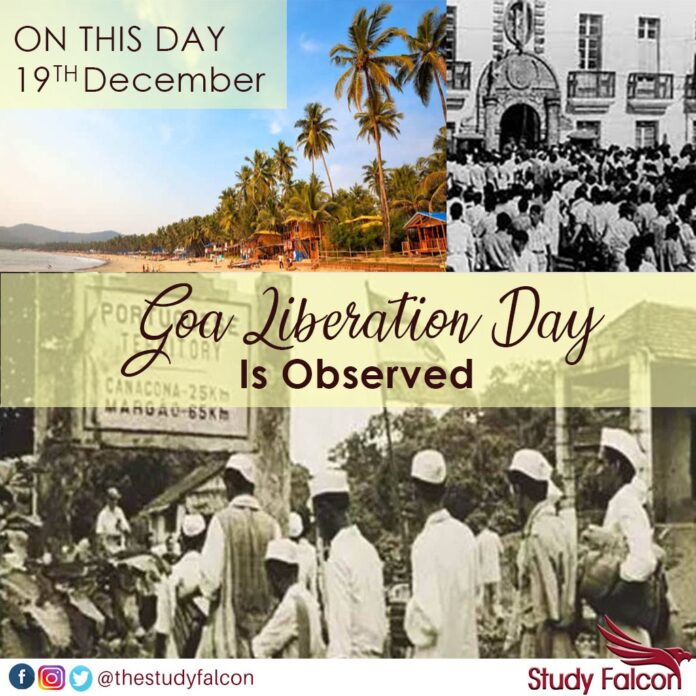Goa Liberation Day, observed every year on December 19 in India, is regarded as one of the most significant days in the history of Goa. Located at around 250 miles south of Mumbai, Goa is one of India’s smallest states and was previously under Portuguese possession for about 450 years. It is all about celebrating the independence of Goa from the Portuguese. Goa is a state on the south-western coast of India within the region known as the Konkan. It is bordered by the states of Maharashtra to the north and Karnataka to the east and south, as well as the Arabian Sea to the west. Its capital is Panaji, which lies on the north-central coast of the mainland district.
The Goa Liberation Day is a celebration of the day Indian armed forces freed Goa from Portuguese rule on December 19, 1961. The day is also particularly important for recognizing the achievements Goa has made in recent years, accomplishing milestones in the tourism sector and maintaining its position as having the highest per capita income among all the states and union territories of India. It was a point in Indian history which made our nation completely free from the foreign rule that had lasted for a couple of centuries till then.
HISTORY OF GOA LIBERATION
Portugal had colonised several territories in India since 1510. However, by the end of 19th century, their rule was limited to few Indian territories including Goa, Daman and Diu, Dadra and Nagar Haveli. The movement to end Portuguese rule in Goa was started with low-level revolts. After India got its Independence in 1945, the territory of Goa was still under the control of Portugal. Despite several rounds of negotiations and diplomatic parleys, Portugal did not agree to free Goa and other Indian territories.
On August 15, 1947, when India gained its independence, Goa was still crumbling under 450 years of Portuguese rule. The Portuguese were among the first to colonize parts of India and refused to give up their hold over Goa and other Indian territories, even in the wake of India’s independence. While no military action was taken from the government at that point of time, a number of diplomatic talks were held with the Portuguese to begin the liberation of Goa. Finally, when no resolutions were being yielded with the talks, the Indian Government decided to use their military option for the liberation of Goa.
The state’s struggle for independence is the forgotten war for freedom. The fight for freedom in the state started on 18 June 1946 after Dr. Ram Manohar Lohia and Dr. Juliao Menezes decided to defy the ban on public meetings in the state. While the first civil disobedience movement was quashed by the Portuguese, it inspired the people of Goa to fight for their independence.
Following a myriad of unsuccessful negotiations and diplomatic efforts with the Portuguese, the former prime minister of India, Jawaharlal Nehru, decided that military intervention was their only option. The Indian government decided to launch an operation aimed at liberating the region from 451 years of Portuguese rule. Ten days prior to the armed action, India’s then Prime Minister Jawaharlal Nehru stated to the press: “Continuance of Goa under Portuguese rule is an impossibility.”
While the liberation process had already begun with revolts within Goa itself, Operation Vijay was conducted by the Indian Armed Forces including the Army, Navy, and the Air Force. The 36-hour military operation, conducted from December 18, 1961, was code-named ‘Operation Vijay’ meaning ‘Operation Victory,’ and involved attacks by the Indian navy, air force, and army. The first air raid was conducted on the Dabolim Airport using 12 English Electric Canberra aircraft. The two-day long confrontation left 22 Indians and 30 Portuguese dead and drew worldwide attention.
The state continued to be under the control of the Portuguese until 1961 even though India attained independence 14 years ago. This is because Portugal was a part of the North Atlantic Treaty Organisation (NATO) and the Indian government didn’t want to get into a conflict with a NATO nation. However, when the Portuguese fired at Indian fisherman and tried to take villagers as hostage in November 1961, the then Defence minister of the country Krishna Menon urged Prime Minister Jawaharlal Nehru to use force and regain the state. As many as 30,000 Indian troops were sent to the state to regain control as part of the plan.
The attack was met by a little resistance from the Portuguese, but eventually, their General Manuel António Vassalo e Silva signed the certificate of surrender. The 450 years of rule of the Portuguese came to an end on December 19, 1961. Though the liberation was met with many countries’ support, Portugal called it an “invasion” of the Indian forces instead.
The victory brought 451-long Portuguese rule in parts of India to an end. Following the victory, the region was placed under military administration for nearly six months.
Now, this day is marked with celebrations in Goa with a number of patriotic events every year. It also brings a reminder for the citizens to learn more about the Goa Liberation Day history. torchlight procession is ignited from three different locations in the state, eventually all meeting at the Azad Maidan. This is where a tribute is made to those who lost their lives in the takeover of Goa. Various cultural programs like Sugam Sangeet — an Indian musical genre with poetry in the Kannada language — are also held to honor the occasion.










